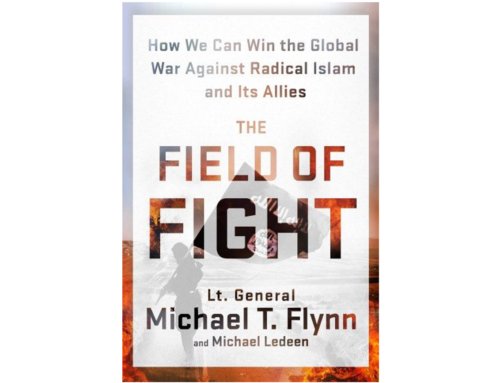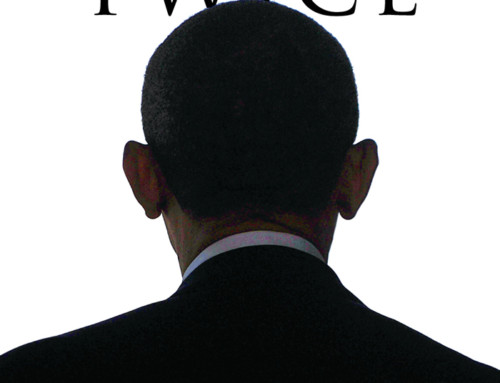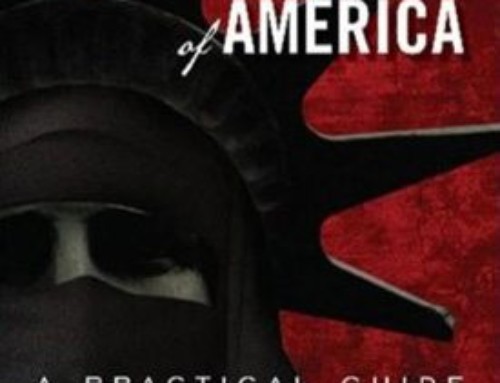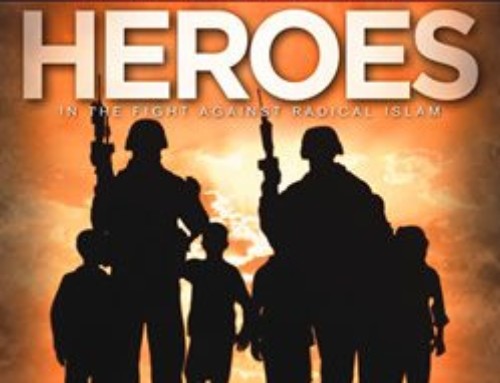Book Review: Countdown to Crisis by Ken Timmerman
Throughout the 1930s, although he been a popular war hero, author, Lord of the Admiralty and had held numerous cabinet ministries, Winston Churchill, remained a “back bencher” barely holding on to his seat in the House of Commons. He was scorned by the media and virtually the whole of the political elite considered him a pariah because he would not refrain from telling the British public what it so desperately did not want to hear. An entire decade before the German bombing blitz over London, he warned his countryman that they would inevitably have to fight Germany again or perish as a sovereign nation.
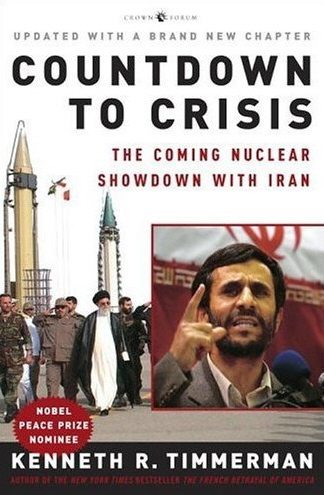 Ken Timmerman’s new book, Countdown to Crisis, should be required reading for all the neo Neville Chamberlains at the State Department, NSC or elsewhere in the Bush administration who wish to give appeasement one more chance. He makes clear that we are facing the specter of Iran, the oldest and most active state sponsor of terror, armed now with nuclear weapons. With remarkable prescience, the author scoops every news agency that is investigating the recent London bombings.
Ken Timmerman’s new book, Countdown to Crisis, should be required reading for all the neo Neville Chamberlains at the State Department, NSC or elsewhere in the Bush administration who wish to give appeasement one more chance. He makes clear that we are facing the specter of Iran, the oldest and most active state sponsor of terror, armed now with nuclear weapons. With remarkable prescience, the author scoops every news agency that is investigating the recent London bombings.
In late 2004, Ayman al-Zawahri met again with top regime leaders, this time in a guesthouse to the north of Tehran… After the first day of meetings, bin Laden himself was brought to the safe house…an intravenous tube was strapped to the back of his hand. He looked frail and old. Janati spread out a map of the world and they discussed different places where bin Laden felt his men could launch spectacular attacks against the United States and its key allies. They discussed specific sites in Britain?
The book contains many new revelations, investigative bombshells for those who are still in denial of the dangers we face. It’s essential message is two-part. With vivid corroborating detail, the author convincingly makes the case that, for over 18 years, not only did the IAEI (the UN’s nuclear weapons “watchdog agency) and the CIA, actually aid Iran in acquiring nuclear weapons, doing so through differing degrees of duplicity and ineptitude. But secondly and perhaps more ominously, he demonstrates that the Iranian Mullahs have forged very strong ties with al Qaeda and have been co conspirators with bin Laden from the beginning of his attacks on America.
Timmerman’s first chapter, The Defector, may very well be a historic anecdote for the ages. It opens on July 26, 2001 in a backwater U.S. Embassy in Baku Azerbaijan. A high-level Iranian security official, Hamid Reza Zakeri, walked in and told the receptionist that he wanted to speak to the CIA because he had information related to the security of the United States. He explained to the station chief, “Joan” that in his capacity as a high-level security officer at Iran’s Ministry of Information and Security (MOIS) headquarters, he had observed the “Arabs” who were trained pilots, being briefed on their appointed targets, and even described, on the table in their meeting room, models of the World Trade Center, the White House, the Pentagon, and camp David. He told her that the attack was coming from the air; that the Arab pilots had already left for America; and he even knew the date for the attack, 9/11/01.
Joan called for backup. Several days later when “CIA George” arrived from headquarters to debrief the “walk in,” he immediately decided that Zakeri was peddling lies, told him so, paid him $200, and told him to get out. The information which could have saved 3,000 lives was never passed up the chain of command. The reader would have to wonder if Timmrman’s story was not one of the reasons that Tenet resigned so suddenly, getting out himself, while the getting was good.
With photos and documents included in the appendix, the author makes a good case that Zakeri, the Baku “walkin,” is a highly credible informant, his information, corroborated by other reports from defectors, sources (spies) still inside Iran and independent intelligence reports. The reader senses that for Timmerman, Zakeri is the primary source for this book and that they, the author and informant, have developed a strong bond in their efforts to forestall Armageddon.
The author also persuades the reader that with his access to transcripts of wiretaps and sources both inside the Iranian regime, he can recreate such the following where the Iranian hierarchy awaits word of its operation—the June 1996 Khobar Towers bombing in Dhahran Saudi Arabia which killed 19 U.S. servicemen. I thought the author’s account gave off the aura of a passage from a crime-family novel:
On the evening of June 25, 1996 the most powerful officials of the Islamic Republic gathered solemnly at the home of president Rafsanjani… a few minutes past 10:00 pm the telephone rang, and Rafsanjani snatched it up. A hush fell over the room. Rafsanjani listened, nodding his head. Then a great smile spread across his face. “The package was delivered,” he said…The room broke into cheers before he could replace the receiver.
The reader learns that the phone call had been intercepted and was discussed in great detail later that year in closed-door hearings before the Senate Select Intelligence Committee. US intelligence personnel were even able to identify the operatives on the other end of the phone with Rafsanjani, one of whom was Imad Mugniyeh, Iran’s “star terrorist planner, and primary liaison to al Qaeda. The Senate Committee agreed with the CIA, it had been an Iranian operation all the way.
Unlike the surprise attack of 9/11, the Clinton administration had been warned repeatedly in mid 1996 of impending terrorist attacks on military personnel based on the Arabian Peninsula. Some reports even cited Iranian agents photographing the Khobar Towers complex. But 1996 was an election year and as Timmerman puts it, no one in the administration wanted hear about the danger. After the attack, in an utterly Neville Chamberlain-like gesture, Clinton made a quiet offer of more talks, to “hold a frank dialogue” with the Tehran regime in hopes that they would stop killing Americans, at least until the election was over. In exactly the same manner that Hitler treated with contempt the supplicant British prime minister, the state-run newspaper in Tehran, Kehan, ran banner headlines – Clinton Requests Negotiations with Tehran. And in the body of the story, it commented that “Clinton was behaving like a drunk bastard, shouting in the street and should be treated like a thug.”
Next, Timmerman drops another bombshell by providing new evidence that Iranians did not stop killing Americans in 1996. One month after the Khobar bombing, sources inside Iran were warning the author of an impending attack on an American airliner, these coming just days before the July 1996 explosion of Flight 800 off the coast of Long Island which killed 230. While the author’s sources described the planned attack as a “hijacking” not a bombing, they revealed that the operation would be mounted in Athens. Flight 800 did in fact originate in Athens.
Recently released information from intelligence agencies seem to corroborate Timmerman’s sources. In early July there were many other independent reports coming from inside the regime, one from a different controlled source inside Iran, warning of an impending airline attack. A counterterrorism analyst consulted for the book alluded to the plausible explanation that the attackers planted a bomb that was activated by a “double timer” similar to the device al Qaeda terrorist Ramsi Yousef used to blow up a Japan Air jetliner. Such a device works on barometric pressure and explodes the bomb at a given interval of time after the second takeoff.
Clinton surely knew that, as a “serial appeaser,” he would be at a disadvantage if he had to run against a war hero, Bob Dole, while war in the Middle East was breaking out. He sent his National Security Advisor, Richard Clarke, who, shockingly, was himself briefed on the warnings that Iran was about to attack an American airliner, and instructed Clarke to tell the investigators to “back off’ until the administration had time to sell the country on the “exploding fuel tank” theory. Timmerman makes clear that his newly revealed evidence doesn’t prove that Iran planned the destruction of flight 800, only that the regime should still be considered a strong suspect. But the reader can also surmise that even if Iran were not the planner of the attack, it was no doubt further emboldened by this shameless display of duplicity and craven cowardice.
Timmerman’s highly detailed and assiduously footnoted narrative proceeds along two parallel time lines and tells two separate stories. The first, excerpted above, chronicles how Iran has been committing acts of terrorism against the US since it took our embassy hostages in 1979 and how it has entered into an alliance with al Qaeda. In another bombshell, the author records that like the Rose Law Firm records that mysteriously appeared late in the Watergate investigations, one week before the 9/11 Commission report was to be sent to the printer, 75 documents were suddenly discovered which linked the 9/11 al Qaeda hijackers to Iran. They corroborated what Zakeri had told the CIA in Baku, and they were filled with references to Imad Mugniyeh who accompanied eight of the ten Saudi “muscle hijackers to Iran for their training sessions, providing them with airline tickets, money, and political cover. Perhaps because the commissioners did not have enough time to fully vet the reports, the 75 documents were boiled down to two squeamish pages (240,241) in the final 9/11 report and shamefully do not even mention Mugniyeh. Both the CIA and some members of the commission were covering for something of some people.
The second story describes in great detail how Iran’s relentless and successful quest for the acquisition of nuclear weapons was aided by the UN generally and the International Atomic Energy Agency (IAEI) specifically and how the agency colluded with the weapons systems “exporters” France, Germany, Russia in their joint effort to ready Iran for a potential nuclear attack on Israel and the U.S. If the Timmerman’s reader viewed the UN as largely hostile to Israeli and American security interests previously, he will see that body as a complete enemy after reading Countdown.
The book provides a timely showcase of John Bolton in his capacity as the person in charge of arms control and international security at the State Department. Now that he is Bush’s candidate for the ambassadorship to the U.N., the reader will understand why Bolton’s confrontational style is utterly vital for that position if we in the West hope to stop or even slow weapons proliferation to rogue enemy states.
I spoke to Timmerman by phone before filing this review. I was curious what he thought about very recent events in London and as well as what he knew about the most recent nuclear weapons development by the Iranians.
Larry Kelley (LK): You describe in your book the meeting last November in Tehran where senior Iranian officials and bin Laden planned attacks on potential targets, including London. Did you see any other Iranian fingerprints on the London bombings?
Ken Timmerman (KT): Spanish officials (who are aiding the British in their investigation of the attacks) believe that the mastermind of the Madrid (commuter train) bombings of 2003 has close ties to the first set of bombers in London. And he was also linked by Spanish investigators to Iran directly. Let’s not forget, the Iranian regime has the longest track record as a state supporter of terrorism of anyone.
(The Sunday Times UK, reports that the primary suspect in both bombings is Mustafa Setmariam Nasar, a Syrian, hiding now in Iraq, and believed to have operated out of Iran prior to both attacks.)
LK: Have the Iranians weaponized their nuclear materials? And do they have finished product?
KT: That is the big question. Here’s what we know: We know they have all the ingredients. We know they have been mining natural uranium since 1989. By the way, with the knowledge and assistance of the IAEI. We now know that they have been secretly enriching uranium for many years. They imported a large network of centrifuges from the A.Q. Khan network (Pakistan’s rogue nuclear weapons developer). We have a copy of that contract. We know that they have enough fissile material for 20 to 25 bombs. We don’t know that they’ve actually done that (weaponized). But we do know that they have all the materials and that they know how to make them.
LK: So let’s assume that they have finished products. How about delivery?
KT: On Colin Powel’s final trip as Secretary of State down to Chile in 2004, he stunned reporters and the CIA by revealing that we had a “walk in,” an Iranian missile engineer, that provided the US government with over a thousand pages of technical drawings showing how they were planning, in mid 2004, to mate their nuclear warheads to the Shahab missiles.
LK: So now, one year later, we’re looking at a terrorist state with nukes?
KT: That is the bottom line. My sources describe, in, let me be careful in saying, uncorroborated reports that in Iran, in a deeply buried bunker, the Iranians are now stockpiling nuclear warheads and Shahab-3 missile launchers.
LK: Like other key Iran watchers such as Mike Ledeen and Jerry Corsi, you say in your book that our best option is to encourage regime change through an Iranian revolution. Do you see any reason for optimism that this is beginning?
KT: No. We need to identify Iran as a clear and present danger and refer it to the UN Security Counsel for nonproliferation treaty violations. We need to provide massive assistance to the pro democracy forces. They need money, organizational help and equipment. And these are things we know how to provide. But that decision has not yet been made.
LK: What is the Bush Administration doing?
KT: There is an initial $3,000,000 at the State Department to go for pro democracy groups now working with people inside Iran but its being single-handedly blocked by a John Kerry protégé at the State Department named Susan Maloney. She was hired for the policy planning staff and believes that, as Kerry said in the campaign, we need to negotiate with the clerical regime in Iran. She believes that we can negotiate with them which is sheer folly.
LK: I suspect your readers would agree.
KT: What I contend is the Clinton Administration had a policy toward Iran—it was appeasement. This administration does not yet have a policy and that’s a big mistake.

